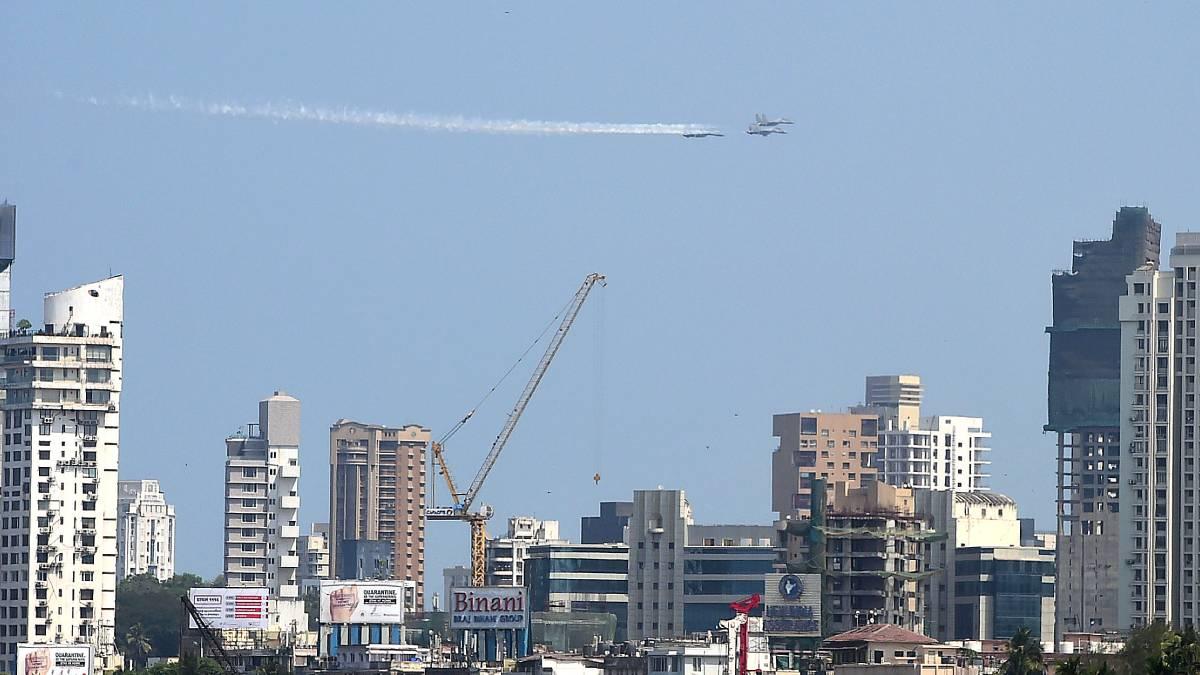‘Developers have started offering 70% to 100% extra area and beyond.’
‘If the market cycle shifts — as many are already predicting with signs of price saturation and reduction — most recent redevelopment projects will unravel.’

Kindly note the image has been posted only for representational purposes.
IMAGE: Mumbai’s skyline. Photograph: ANI Photo
In Mumbai’s crowded redevelopment market, developers are pushing the envelope by offering significantly larger homes to tenants of ageing housing societies.
With competition intensifying and liquidity from recent strong sales lifting confidence, societies are being offered 70 to 130 per cent extra carpet area, particularly in the city’s most sought after neighbourhoods.
For tenants, this translates into the promise of spacious, modern apartments replacing crumbling old buildings.
For developers, it’s a strategy to secure projects, as vacant land is scarce and redevelopment remains the most cost-effective way to enter marquee markets.
“Additional area being offered to existing tenants is a natural evolution,” said Chintan Sheth, chairman and managing director, Sheth Realty.
“Redevelopment genuinely upgrades lifestyles with modern layouts and future-ready amenities. As long as project fundamentals are strong and design efficiency is maintained, the additional space creates value for everyone.”
According to Sanjay Daga, CEO and MD of Anex Advisory, the scale of offers varies by location and scheme.
“In middle-income suburbs, 30 to 40 per cent extra carpet area is typical. In prime areas, it can go up to 120 to 130 per cent,” says Daga.
“This is possible thanks to the floor space index (FSI) framework under Development Control and Promotion Regulations (DCPR) 2034, and incentives in cluster or Maharashtra Housing and Area Development Authority redevelopments.”
The most aggressive offers are concentrated in prime markets such as Bandra, Juhu, Malabar Hill, Worli and Nepean Sea Road, where appreciation potential is highest.
Manan Shah, MD, MICL group, said that redevelopment is about more than margins.
“These projects are not just about financial returns — they are about brand-building and prestige. Offering additional area is a deliberate strategy to create landmark developments in micromarkets where supply is scarce and demand is deeply aspirational.”
The revised DCPR 2034 has unlocked higher FSI allowances, sometimes up to 5.4 in certain schemes, along with fungible FSI and transferable development rights (TDR).
This gives developers flexibility to expand the saleable area while still offering more space to tenants.
FSI is the ratio of a building’s total built-up area to the size of the plot it occupies, while TDR allows developers to transfer or purchase unused building rights to construct additional space.
“Several factors are driving this trend, including higher FSI, rationalised premia, and rising buyer aspirations for bigger homes,” said Anuj Puri, chairman and founder, Anarock.
“Builders are offering not just larger layouts, but also amenities such as multiple parking spaces, swimming pools, gyms, and landscaped gardens.
“It has become a unique selling proposition for winning society mandates.”

Yet, not all developers are convinced the numbers add up.
One Mumbai-based developer called many of today’s offers “frankly unreasonable”.
While FSI is available, the economics often don’t line up.
“Construction costs are linked to ready-reckoner rates, while selling prices are market-driven.
“That mismatch makes many high-percentage offers unviable. Still, we’ve seen societies being offered up to 150 per cent.
“When the existing FSI is already high, that becomes unsustainable.”
Liquidity in the market is partly stoking the trend.
After two years of record post-pandemic sales, many developers are sitting on substantial capital and eager to deploy it.
“It’s a classic case of too much money chasing too few assets,” the developer said.
Industry experts warn that this exuberance could backfire if the cycle turns.
“It’s already a big problem. Developers have started offering 70 to 100 per cent extra area and beyond. Redevelopment is messy.
“If the market cycle shifts — as many are already predicting with signs of price saturation and reduction — most recent redevelopment projects signed up with 70 to 100 per cent extra area will unravel,” an analyst said.
Some developers, however, are deliberately avoiding the frenzy.
“Today, every developer wants a board in Mumbai, and redevelopment is the cheapest entry.
“But competition is pushing offers too high — that’s why we’re staying out,” said another city-based builder.
Industry veterans believe the risk lies less with seasoned developers and more with newcomers who overbid.
Feature Presentation: Ashish Narsale/Rediff




